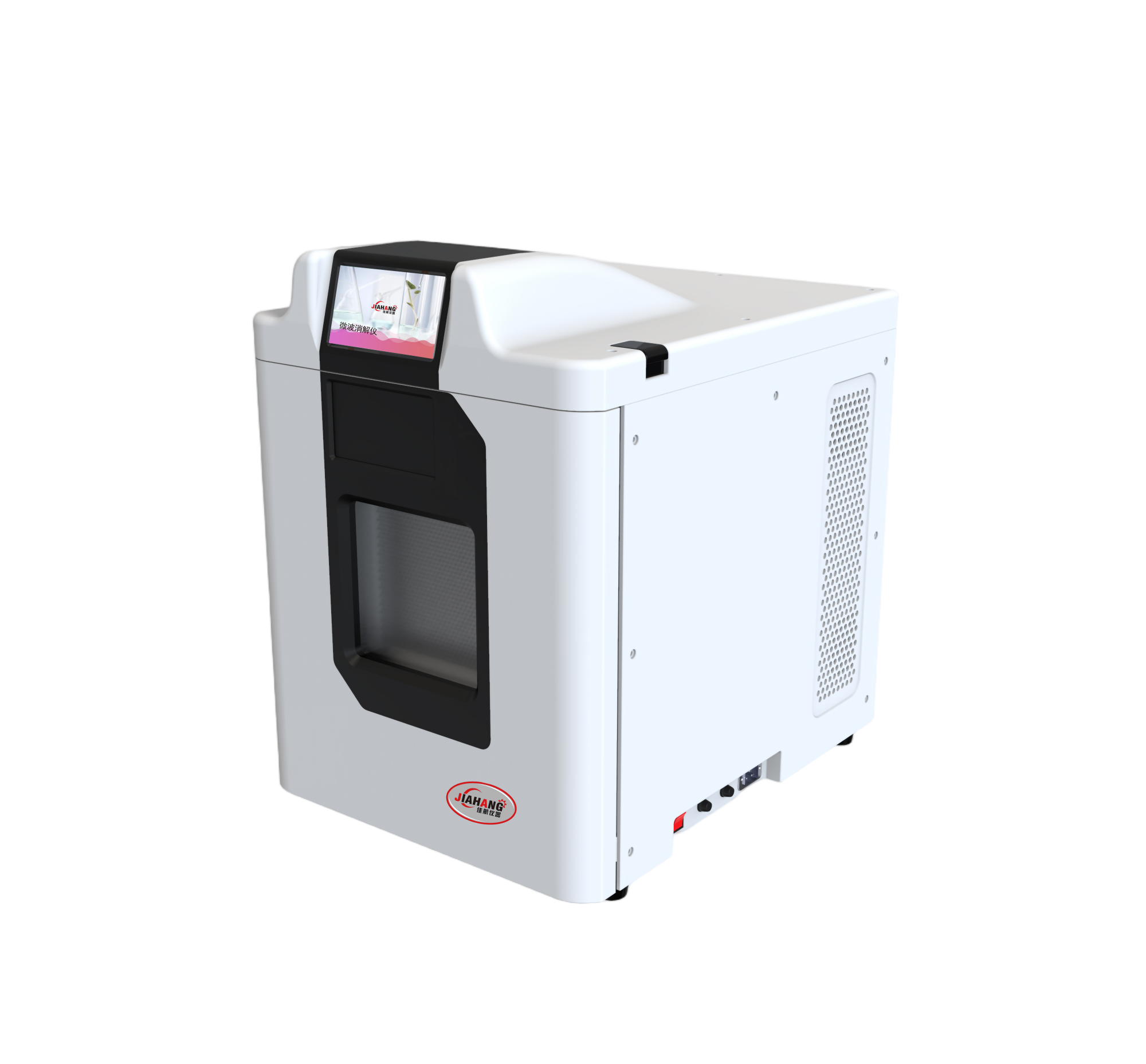June 11, 2025
Tag:
1. Preface
Polyetheretherketone (PEEK) is a high polymer composed of repeating units containing one ketone bond and two ether bonds in its main chain structure, and it belongs to a special polymer material. Due to the excellent comprehensive performance of polyetheretherketone, it can replace traditional materials such as metals and ceramics in many special fields. Through experiments, we sought a microwave digestion instrument solution that could completely digest copper polyether ether, which was more conducive to the rapid and accurate determination of multiple elements in the sample in the subsequent process.
2. Instruments and reagents
2.1 Instruments
Digipol-MWD60 fully automatic intelligent microwave digestion instrument, acid remover, analytical balance (one part per 100,000), etc.
2.2 Reagents
Nitric acid (68%), sulfuric acid(98%)

3. Experimental Methods
3.1 Sample
Polyetheretherketone (PEEK) is prepared by the nucleophilic substitution method. It is prepared by the polycondensation reaction of 4, 4' -difluorobenzophenone and hydroquinone in diphenylsulfone solvent under the action of alkali metal carbonates. The reaction equation is as follows:

3.2 Selection of Digestion Temperature
Weigh approximately 0.1g of the PEEK sample (accurate to 0.1mg), add 10mL of nitric acid, let it stand for about 30 minutes, assemble the digestion tank, and conduct the experiment according to the following set parameters:
| Stage | temperature /℃ | Time /min | Power /W |
|
1 |
150 |
10 |
400 |
|
2 |
180 |
5 |
400 |
|
3 |
220 |
60 |
400 |
After the experiment was completed, when the temperature dropped below 60℃, the digestion tank was taken out and transferred to a fume hood, which was slowly opened. After the acid was removed and the volume was determined, there was a small amount of white turbidity.
Weigh approximately 0.1g (accurate to 0.1mg) of the PEEK sample again, add 10mL of nitric acid, let it stand for about 30 minutes, assemble it into a digestion tank, and conduct the experiment according to the following set parameters:
| Stage | temperature /℃ | Time /min | Power /W |
|
1 |
150 |
10 |
400 |
|
2 |
180 |
5 |
400 |
|
3 |
210 |
5 |
400 |
|
4 |
230 |
60 |
400 |
After the experiment, after acid removal and volume adjustment, there was still a small amount of white turbidity in the digestion solution.
Weigh approximately 0.1g (accurate to 0.1mg) of the PEEK sample, add 5mL of sulfuric acid, and place it on the acid-stripping device for pre-treatment at 120 ° C for 30 minutes. After removing and cooling, add 4mL of nitric acid, let it stand for about 10 minutes, assemble the digestion tank, and conduct the experiment according to the following set parameters:
| Stage | temperature /℃ | Time /min | Power /W |
|
1 |
150 |
10 |
400 |
|
2 |
180 |
5 |
400 |
|
3 |
210 |
5 |
400 |
|
4 |
230 |
60 |
400 |
After the experiment, when the temperature drops below 60℃, take out the digestion tank and transfer it to a fume hood, then slowly open it. After the acid is removed and the volume is adjusted, the digestion solution becomes clear and transparent.
3.3 Selection of Sampling Volume
As the copper polyether ether sample contains a large amount of carbon elements, the decomposition to produce carbon dioxide will generate considerable pressure. It is recommended to control the sample volume within 0.1g.
4. Result
The copper polyether ether sample has high structural stability. When the sample is taken at 0.1g, a mixed acid system of sulfuric acid and nitric acid is used, and it is kept at 230℃ for about 1 hour to completely dissolve it.
5. Attention
If the reaction temperature needs to be reduced, the holding time should be extended. The experiment found that when 0.1g of the sample was taken and held at 220℃ for 2 hours, the sample could also be completely dissolved.


Contact Us
Tel: (+86) 400 610 1188
WhatsApp/Telegram/Wechat: +86 13621645194
+86 15021993094
Follow Us:




 Pharma Sources Insight July 2025
Pharma Sources Insight July 2025


